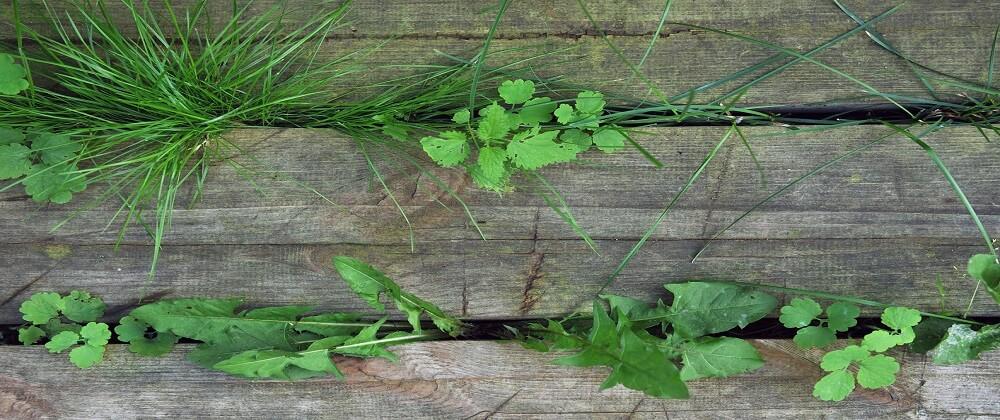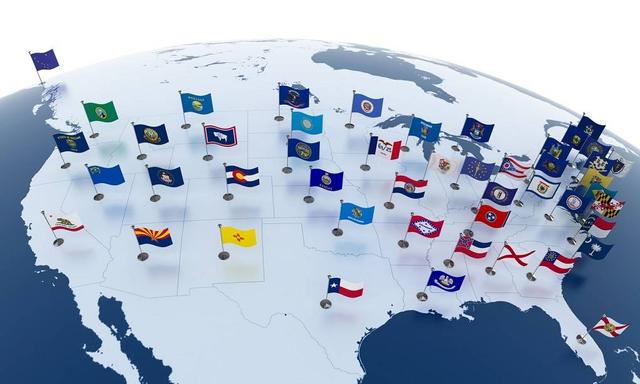
Common Weeds in NY: How to Identify to Control Them?
By: ROS Team
New York has a wide range of plants, including beautiful flora and unwanted weeds. Weeds are plants that grow where they do not want, competing with the plants we cultivate for important resources like nutrients, sunlight, and water. It’s important to be able to recognize and manage these weeds to keep our gardens, lawns, and fields healthy.
This article will explore some common weeds found in New York, helping you identify them and providing strategies to control effectively them.
Common Weed Characteristics
Common weeds exhibit various characteristics that make them adaptable and often resilient. Understanding these traits can aid in their identification and management. Here are some typical characteristics of common weeds:
Rapid Growth:
Weeds often can grow quickly, allowing them to outcompete desirable plants for resources.
High Reproductive Capacity:
Many weeds produce a large number of seeds, ensuring the survival and spread of the species. Some weeds, such as rhizomes or stolons, can also propagate through vegetative means.
Adaptability:
Weeds are often highly adaptable to different environmental conditions. They can thrive in a range of soil types, moisture levels, and sunlight conditions.
Aggressive Competition:
Weeds are competitive for resources like water, nutrients, and sunlight, often suppressing the growth of neighboring plants.
Wide Distribution:
Common weeds tend to have wide geographic distributions and can be found in various ecosystems, including gardens, lawns, agricultural fields, and natural habitats.
Mimicry:
Some weeds exhibit mimicry, resembling desirable plants in their early stages, making them challenging to identify until they mature or flower.
Persistence:
Weeds can be persistent and challenging to eradicate. Their ability to regrow from roots or seeds makes complete removal essential for long-term control.
Allelopathy:
Certain weeds release chemicals into the soil that inhibit the growth of nearby plants, providing them with a competitive advantage.
Resistance to Control Measures:
Weeds may develop resistance to commonly used herbicides over time, requiring changes in management strategies.
Invasiveness:
Some weeds are invasive species, meaning they can rapidly spread and displace native vegetation, causing ecological imbalances.
Distinctive Morphological Features:
Weeds often have distinctive characteristics such as unique leaf shapes, colors, or growth habits that aid in their identification.

Common NYC Weeds
The following are the most common weeds of New York:
1. Dandelion (Taraxacum Officinale):
Identification: Dandelions are easily recognized by their bright yellow flowers and distinctive pinnately lobed leaves. The plant produces a fluffy seed head that is easily carried by the wind.
Control: Regular mowing can help control dandelions in lawns. For isolated plants, hand pulling or using a dandelion digger is effective. Applying herbicides labeled for dandelion control is also an option.
2. Crabgrass (Digitaria Spp.):
Identification: Crabgrass is an annual grass weed with spreading stems and finger-like spikes. It thrives in sunny, open areas and is often found in lawns and disturbed soils.
Control: A thick and healthy lawn is the best defense against crabgrass. Pre-emergent herbicides applied in early spring can prevent seed germination. Post-emergent herbicides can be used for existing crabgrass.
3. Broadleaf Plantain (Plantago Major):
Identification: Broadleaf plantain has broad, oval leaves with prominent parallel veins. The plant produces inconspicuous flower spikes. It’s often found in compacted soils.
Control: Hand pulling is effective for small infestations. Improve soil conditions to discourage plantain growth. Herbicides labeled for broadleaf weed control can be applied if necessary.
4. Chickweed (Stellaria Media):
Identification: Chickweed has small, delicate leaves and produces tiny white flowers. It forms dense mats in lawns and gardens.
Control: Regular mowing and hand weeding can help control chickweed. Applying mulch to garden beds can suppress its growth. Herbicides labeled for chickweed control are available.
5. Common Purslane (Portulaca Oleracea):
Identification: Purslane has succulent leaves and small yellow flowers. It often grows in garden beds, sidewalks, and driveways.
Control: Hand pulling is effective for small infestations. Ensure proper drainage to discourage purslane growth. Herbicides can be used if necessary.
6. Poison Ivy (Toxicodendron Radicans):
Identification: Poison Ivy is recognizable by its compound leaves, usually in groups of three. The leaves can be glossy or dull, and the plant may have whitish berries.
Control: Wear protective clothing when handling. Mechanical removal using gloves is effective for small infestations. Herbicides labeled for poison ivy control can be applied, but caution is necessary.
7. Ground-Ivy (Glechoma Hederacea):
Identification: Ground-Ivy, also known as Creeping Charlie, has round, scalloped leaves and small, tubular purple flowers. It spreads rapidly in shaded areas.
Control: Regular mowing can help control ground-ivy in lawns. Hand pulling is effective for small infestations. Herbicides labeled for broadleaf weed control can be applied.
8. Stinging Nettle (Urtica Dioica):
Identification: A stinging Nettle has toothed leaves and is covered with tiny, stinging hairs that cause skin irritation. It often grows in moist, shaded areas.
Control: Wear protective clothing when handling. Mechanical removal using gloves is effective. Herbicides can be used, but care is needed due to the plant’s potential for skin irritation.
9. Yellow Woodsorrel (Oxalis Stricta):
Identification: Yellow Woodsorrel has heart-shaped leaflets and small yellow flowers. It often thrives in lawns and gardens, preferring moist conditions.
Control: Hand pulling is effective for small infestations. Improving soil drainage can discourage woodorrel growth. Herbicides labeled for oxalis control can be applied.
10. Japanese Knotweed (Polygonum Cuspidatum):
Identification: Japanese Knotweed has bamboo-like stems, heart-shaped leaves, and small white flowers. It is highly invasive and can be found along roadsides and waterways.
Control: Due to its aggressive nature, professional help may be required for effective control. Herbicides, combined with cutting and removal, may be necessary.
Identification and Common Control Strategies
Effectively controlling weeds requires a combination of identification, prevention, and control methods.
Identification:
- Observe Plant Characteristics: Pay attention to the weed’s leaf shape, flower color, growth habit, and overall appearance. Online resources and weed identification guides can be helpful in making accurate identifications.
- Consider Growing Conditions: Different weeds favor specific growing conditions, such as soil type, sun exposure, and moisture levels. Understanding these preferences can aid in identifying potential weed problems.
Prevention:
- Maintain a Healthy Lawn: A dense, healthy lawn is less susceptible to weed invasion. Regular mowing, fertilization, and watering promote a strong turf that can better compete with weeds.
- Practice Good Garden Hygiene: Remove weeds promptly to prevent seed dispersal. Clean tools and equipment to avoid spreading weed seeds.
- Mulch Around Desirable Plants: A layer of mulch can suppress weed germination and growth, while also conserving soil moisture and reducing erosion.
Control:
- Hand Pulling: For small infestations, hand-pulling can be an effective method, especially for weeds with shallow root systems.
- Herbicides: Herbicides can be used to control larger weed infestations, but it is crucial to choose the right herbicide for the specific weed and apply it according to label instructions.
- Natural Alternatives: Organic methods, such as vinegar and boiling water, can be used to control certain weeds. However, these methods may not be as effective as herbicides for larger or more persistent weeds.
Weeds in New York: Final Thoughts
Identifying and controlling common weeds in New York is essential for maintaining the health and aesthetics of gardens and landscapes. By combining cultural, mechanical, and chemical control strategies, homeowners and gardeners can effectively manage weed populations and create thriving outdoor spaces.
Read Also: Homemade Weed Killer Recipes – Vinegar And Epsom Salt








